The two summits are overcome, and the leaders have returned exhausted from Hiroshima and Xi’an to their countries. We were treated to first-class political drama in both cities. The performance in Xi’an was more colorful and opulent – which is also in line with the widespread notions of the appearance of power in Central Asia. In Hiroshima, the stage design was simpler. But the messages were more dramatic.
The G7 tightened the sanctions noose around Russia, and President Zelenskiy personally attended as a surprise guest. But of particular concern to the Japanese hosts was China. As expected, the Seven bid farewell with the intention of taking a more united approach to economic coercion in the future. This was accompanied by a commitment of joint de-risking. China, on the other hand, saw the main source of economic coercion and trade risk in the US.
At the Central Asia Summit, the highlight was not a final declaration, but Xi Jinping’s slowly read speech. China may always stress to meet its partners at eye level, but Xi’s position was definitely that of the local heavyweight among dependent junior partners. Read more in our analysis.
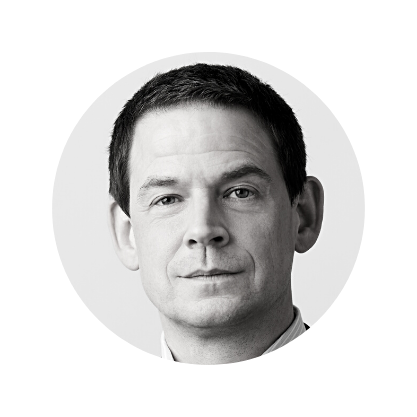
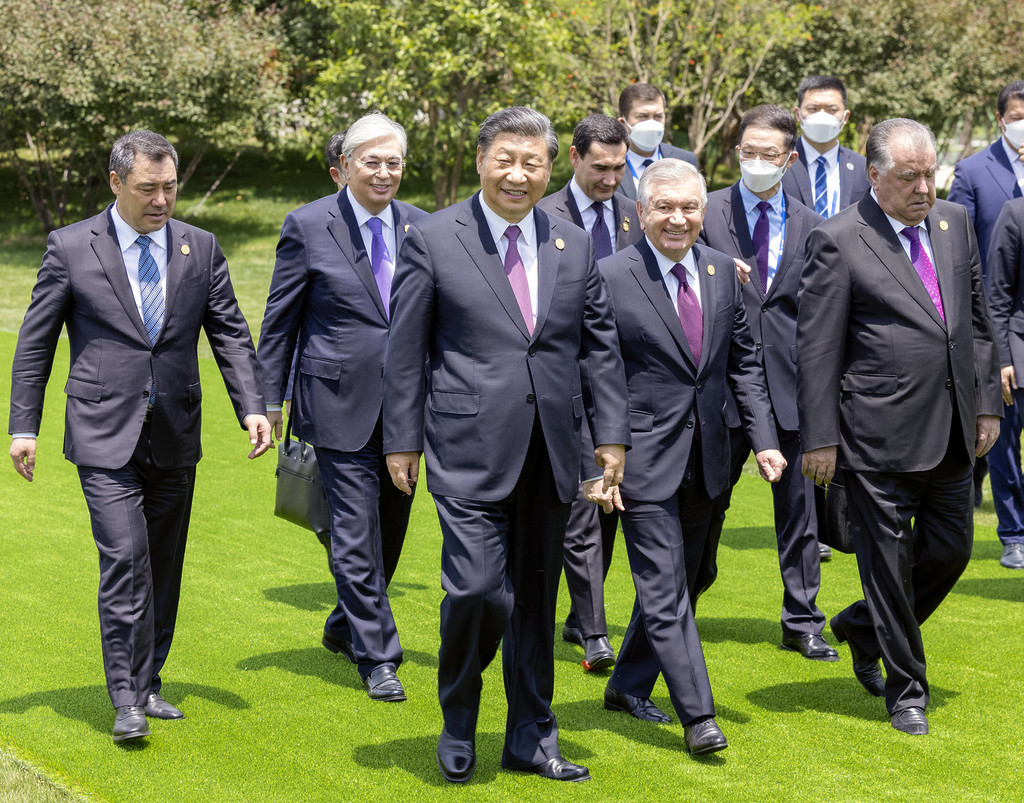
If the metaphor of a summit is taken literally, one could make out two peaks that were mentally far apart at the weekend. While Xi Jinping celebrated a new, sinocentric order of Asia at the Central Asia Summit, Japan pushed through a clearly China-critical agenda against German reservations at the G7 summit.
Xi had invited the heads of state of the Central Asian states of Kazakhstan, Kyrgyzstan, Tajikistan, Turkmenistan and Uzbekistan to the ancient imperial state of Xi’an and welcomed them with much pomp. Russia was not invited.
Xi announced:
While China repeatedly accuses the USA of hegemonic behavior, it is far from exempt from such impulses itself. The presidents paid their respects to Xi at several moments in stilted ceremonies. Xi was able to reap the fruits of his Silk Road strategy here. Before his Belt and Road Initiative, the countries of Central Asia had been almost forgotten and found themselves far from the predefined trade axes. They gratefully accept China’s offer of trade and investment.
In his speech to the other presidents, Xi outlined how he sees the region moving forward. Despite verbal embellishment with an emphasis on “friendship,” the slowly delivered text partly sounded like a lecture to a group of junior colleagues. He listed several Chinese-funded transport projects as evidence of the success of the Silk Road – all of them linking “China” to another part of the world, like the “China-Uzbekistan-Kyrgyzstan railway.”
Xi expressed his expectation that the other countries participate more actively in his own Global Security Initiative. Over and over, Xi named his country as a crucial player. “China will take this as an opportunity to step up coordination with all parties for good planning, development and progress of China-Central Asia cooperation.” The world needs a “harmonious Central Asia.”
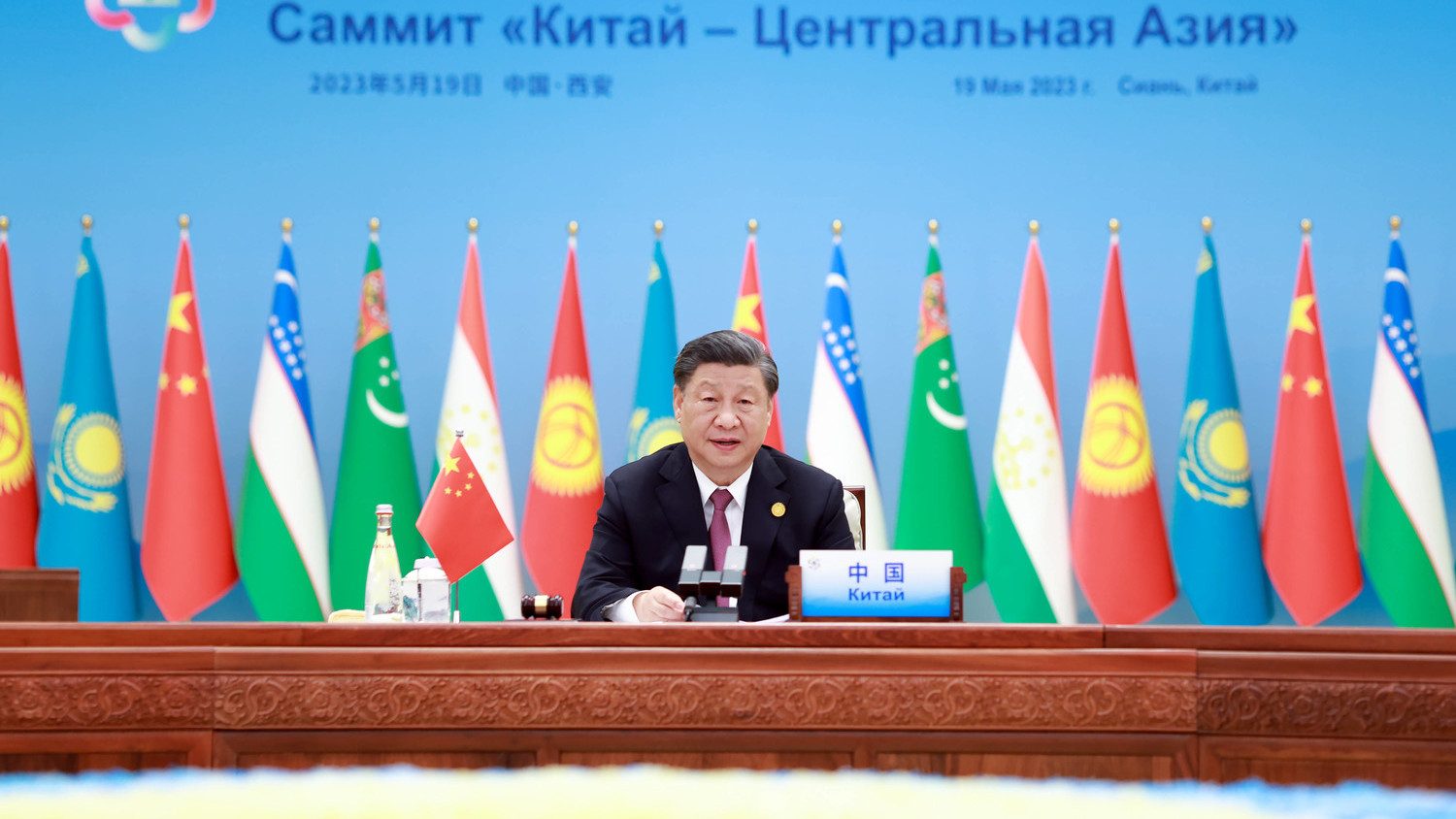
At the same time, the Chinese leader spoke quite openly amongst his political peers where systemic issues were involved. We should “stand firm against external attempts to interfere in domestic affairs of regional countries or instigate color revolutions,” Xi said. It was color revolutions that brought free elections to Georgia, Lebanon, Kyrgyzstan, and, not least, Ukraine. The present Kyrgyz President Sadyr Dzhaparov was one of the insurgents back then and was now putting on a brave face.
The autocratically tinged message went down better with Kazakh President Kassym-Shomart Tokayev. He received preferential treatment because a week ago, he fully expressed support for the Chinese line on Taiwan in an interview with Chinese state television. “Taiwan is part of China,” Tokayev said. He would support all efforts for “reunification.”
It is an open secret that Xi did not accidentally hold his Central Asia meeting in parallel with the G7 summit of the established developed nations. As expected, the heads of government of the West talked extensively about China. In the final document, the word “China” appears 20 times. For instance, they agreed to jointly stand up against economic coercion.
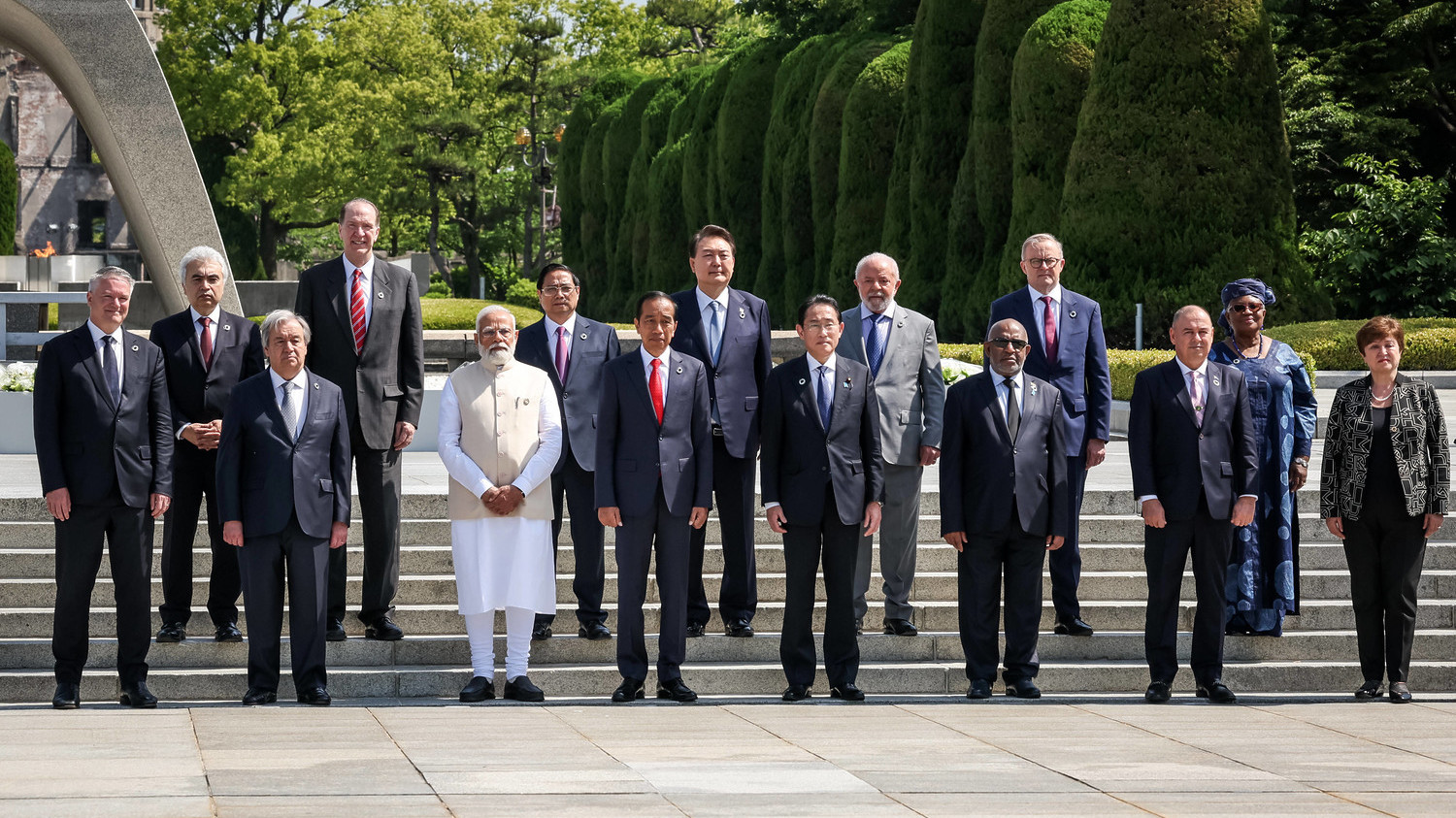
Regarding China, the G7 decided (mainly in paragraph 51 of their declaration under the title “Regional Affairs”):
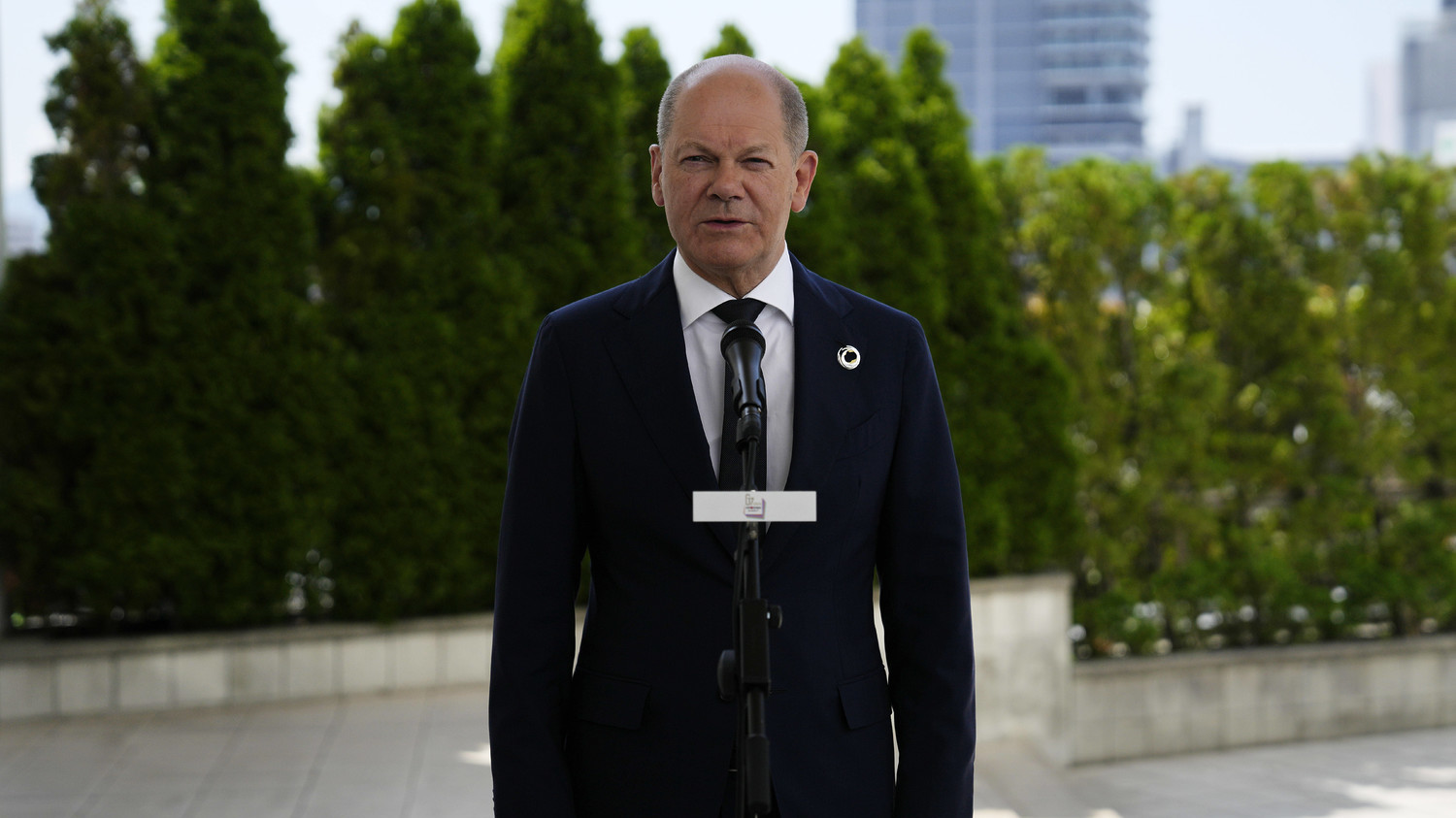
Despite the strong words in their individual statements, the participants emphasized that they did not wish to take an aggressive stance toward China. There is no “hostile” attitude vis-à-vis China, only a “direct and candid” one, said Joe Biden’s security advisor Jake Sullivan.
In an interview with the German public broadcaster ZDF, Chancellor Olaf Scholz emphasized that the G7 remain committed to economic development in China. While the G7 want to reduce risks in their business with China, many people in China still live in precarious conditions, Scholz said in Hiroshima on Sunday. “Therefore, nobody has an interest in preventing growth.” Scholz is also said to have particularly pushed for better offers to the Global South.
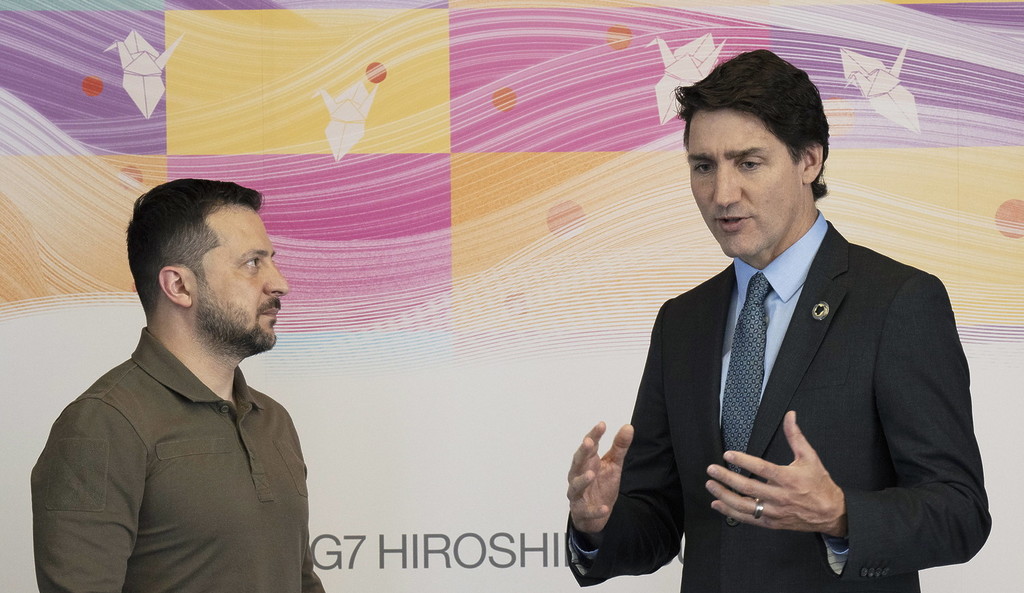
China itself reacted predictably angered. The spokesperson for the Foreign Ministry urged Japan to recommit to the post-war order and stop dumping radioactive water into the ocean before criticizing China. Before the US speaks of “economic coercion,” it should reflect on what it has been doing itself all these decades. He said the greatest economic coercion comes from the US, with the G7 being its accomplices.
As far as “de-risking” is concerned, the greatest risk would currently be posed by the USA, which he accused of tearing up trade networks in the name of national security. He further said the G7 was an exclusive, small bloc and an instrument of “America First,” and China would never bow to rules dictated by such a small group.
The Chinese Foreign Ministry also praised the inclusiveness and modernity of the Central Asia Summit in Xi’an. Nevertheless, the two summits could hardly be compared in terms of the balance of power of its dialogue partners. The Central Asian countries encompass a vast area and are often underestimated in the West. But while the GDP of each of the G7 countries and China is in the trillions, the GDP of the five Central Asian countries is measured in billions (some of them only in the double-digit range).
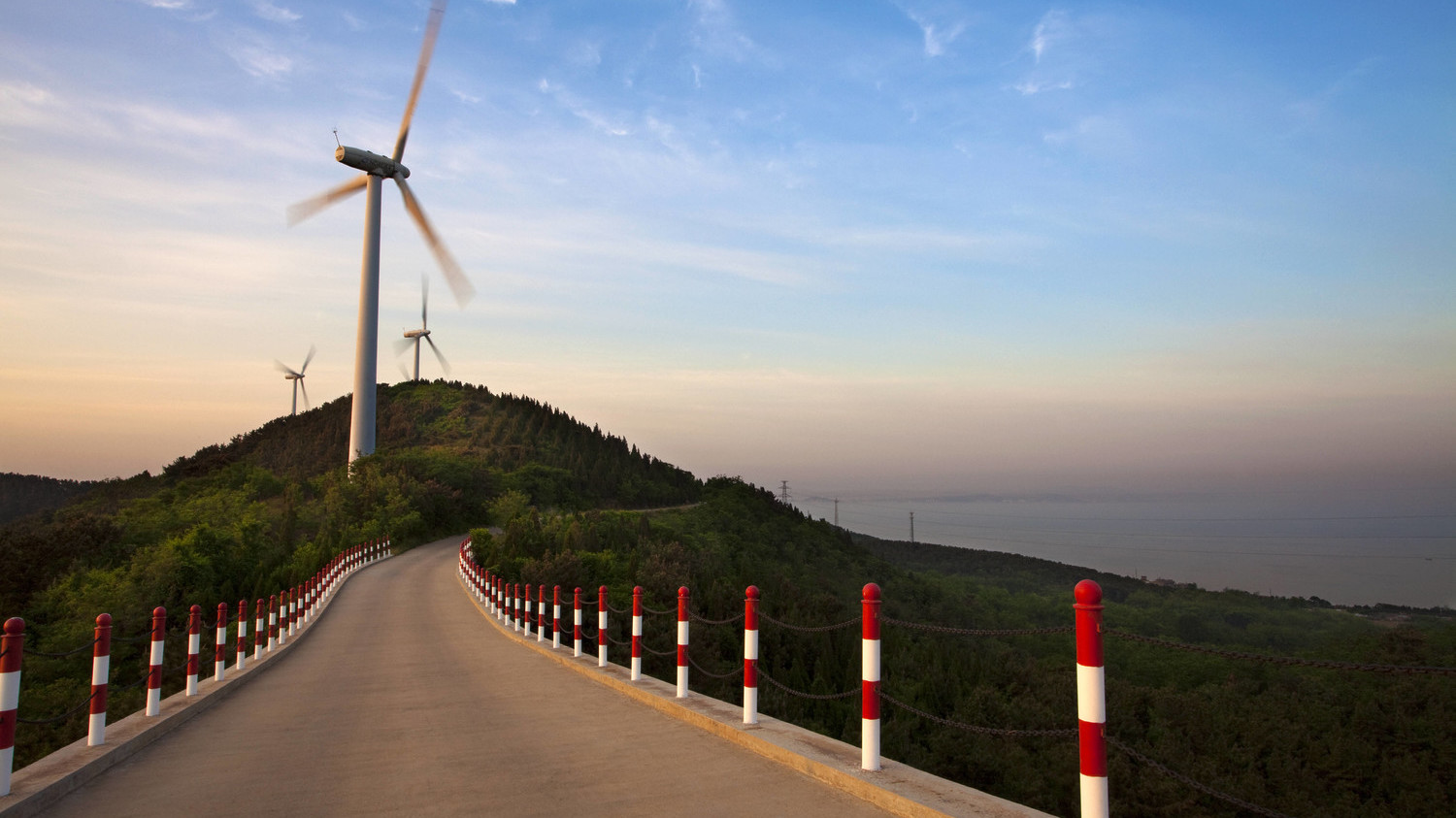
It is “not intended to be a G7 initiative; rather, it is to be a global undertaking”, emphasized Chancellor Olaf Scholz in the founding declaration of the “open and cooperative international” G7 Climate Club. That was at the end of last year. Over the weekend, the G7 heads of government met in Hiroshima and the climate club was again a prominent part of the final declaration.
But the project suffers from a lack of interest from the world’s largest greenhouse gas emitter. During his first trip to China last November, Scholz explicitly invited China to join.
The disinterest has two main reasons:
Another issue is that countries like China, but also India or Brazil, no longer want to be invited into clubs whose rules were previously solely determined by the West, especially a country like China, which is a leader in some areas of climate technology.
Given this development, a key statement in the German Climate Club declaration feels outdated: “Committed developing and emerging countries that join the Club are to receive support to push ahead with the transformation of their industries with a view to attaining climate neutrality.”
One sentence by Economy Minister Robert Habeck seems particularly lecturing: The transformation of the industry to climate-friendly processes and technologies is “indispensable” and “an issue that does not only concern G7 members”. You don’t say; it was said behind the scenes in Beijing. Publicly, there is polite silence.
Since its inception, Scholz’s Climate Club has therefore remained of no concern in the Chinese media, not even important enough to reject or be repelled by.
Presumably, there will be no functioning global club in the future where China and other rising countries are not founding members from the outset. In this respect, the new G7 climate initiatives will probably also be for naught. The BRICS countries represent more people than the large developed countries and now also have more economic power than the G7.
The technical and organizational successes of the Chinese energy transformation fuel this self-confidence. With a share of less than 20 percent of the global economy, China installed around three-quarters of the world’s new solar and wind energy capacities in 2022. For offshore wind, the figure is as high as 80 percent.
For hydropower, the global growth share is as high as 80 percent. Hydropower still accounts for the largest global share of renewables. In the solar sector, too, production growth is breaking all global records. From the raw material polysilicon to the finished modules: Everywhere, growth is over 50 percent, which means a capacity of almost 600 gigawatts for modules. By comparison, Germany installed seven gigawatts of new capacity in 2022. All the solar systems currently installed in Germany account for around 11 percent of a single year’s production in China.
In Japan, the only Asian G7 country, solar expansion is at a similar level as in Germany. So it is wrong to say that the G7 countries are pioneers who, with their Club, are showing the others how it’s done. On the contrary: 80 percent of the global production chains in the solar sector are located in China. For key components, the figure is even over 90 percent.
The G7 initiative also stagnates because China knows it dominates the resources for the energy transition. For example, China controls around 80 percent of the production of rare earth elements. It even controls 95 percent of the magnets made from these highly sought-after industrial metals. China similarly dominates the production of cobalt and graphite. Regarding the battery raw material lithium, Chile has the largest proven reserves, with over 40 percent.
China urgently needs the deposits itself. Because three-quarters of the world’s lithium-ion batteries are produced in the People’s Republic. China is the largest producer of the four most essential battery components. They produce 53 percent of the cathodes used as the negative pole in an electrolytic cell, as much as 78 percent of the anodes, the positive pole, and 66 percent of the separators that separate the two.
Two Chinese companies, CATL and BYD alone control over 50 percent of the global EV battery market. That creates a lot of market power. Every second EV is made in China and 98 percent of all electric buses. Two-thirds of EVs sold worldwide are made in China.
Russia’s Prime Minister Mikhail Mishustin will visit China on 23 and 24 May, as the Chinese government confirmed on Friday. Mishustin will travel to Shanghai after Beijing. According to the Russian government, a meeting with President Xi Jinping is on the itinerary. fin
According to EU Commission President Ursula von der Leyen, several companies registered in China are engaged in evading sanctions against Russia. There is “clear evidence” that some companies are supplying sanctioned goods from the European Union to Russia via third countries, she told the German broadcaster ZDF during the G7 summit in Japan.
But the fact that the companies are registered in China does not necessarily mean that they are Chinese. Some of the companies exist only on paper and have owners with different nationalities, said the EU Commission President.
However, she stressed that these companies will be subject to punitive measures under the EU’s eleventh sanctions package. “We take it seriously that we want to stop the circumvention of sanctions,” von der Leyen said. So far, supplies to Russia are perfectly legal from China’s point of view – China does not participate in the sanctions. The EU can thus only target the companies themselves. fin
The Quad Group consisting of the USA, Japan, India and Australia plans to work together to secure each other’s supplies of semiconductors and key industrial raw materials. This was reported by the Japanese business newspaper Nikkei. The Quad met in Hiroshima directly after the G7 summit. From an organizational perspective, this was particularly easy to do since the USA and Japan belong to the G7, and India and Australia were invited as guests. fin
Instead of placing its shares in the Shanghai Stock Exchange’s technology segment as planned, agrochemicals specialist Syngenta wants to go public on the main market. With this announcement, the IPO, which had stalled in March, shows a sign of life: The Shanghai stock exchange operator canceled a formal hearing on the trading requirements without providing any reasons. The Chinese parent company ChemChina aims to raise 65 billion yuan (eight and a half billion euros) by selling the shares.
Formerly a Swiss company, Syngenta was acquired by ChemChina in 2015 for the hefty sum of 43 billion US dollars. The company produces genetically modified seeds, pesticides and other products for agriculture. After the acquisition, the company was delisted from Western stock exchanges. It is now returning to the market in Shanghai. fin
Users of the short video app TikTok have filed a lawsuit against a ban on the app passed by the US state of Montana. As previously expected, the video creators are primarily putting forward two arguments against the ban:
Republican Governor Greg Gianforte sees this differently. He claims to protect the people of his state from being spied on by China. He signed the law on Wednesday. Gianforte intends it to come into force at the beginning of next year.
The lawsuit now comes from five Montana residents who regularly post videos on the app. “The law takes the broadest possible approach to its objectives, restricting and banning the protected speech of all TikTok users in Montana to prevent the speculative and unsubstantiated possibility that the Chinese government might direct TikTok Inc., or its parent, to spy on some Montana users,” the complaint states. fin
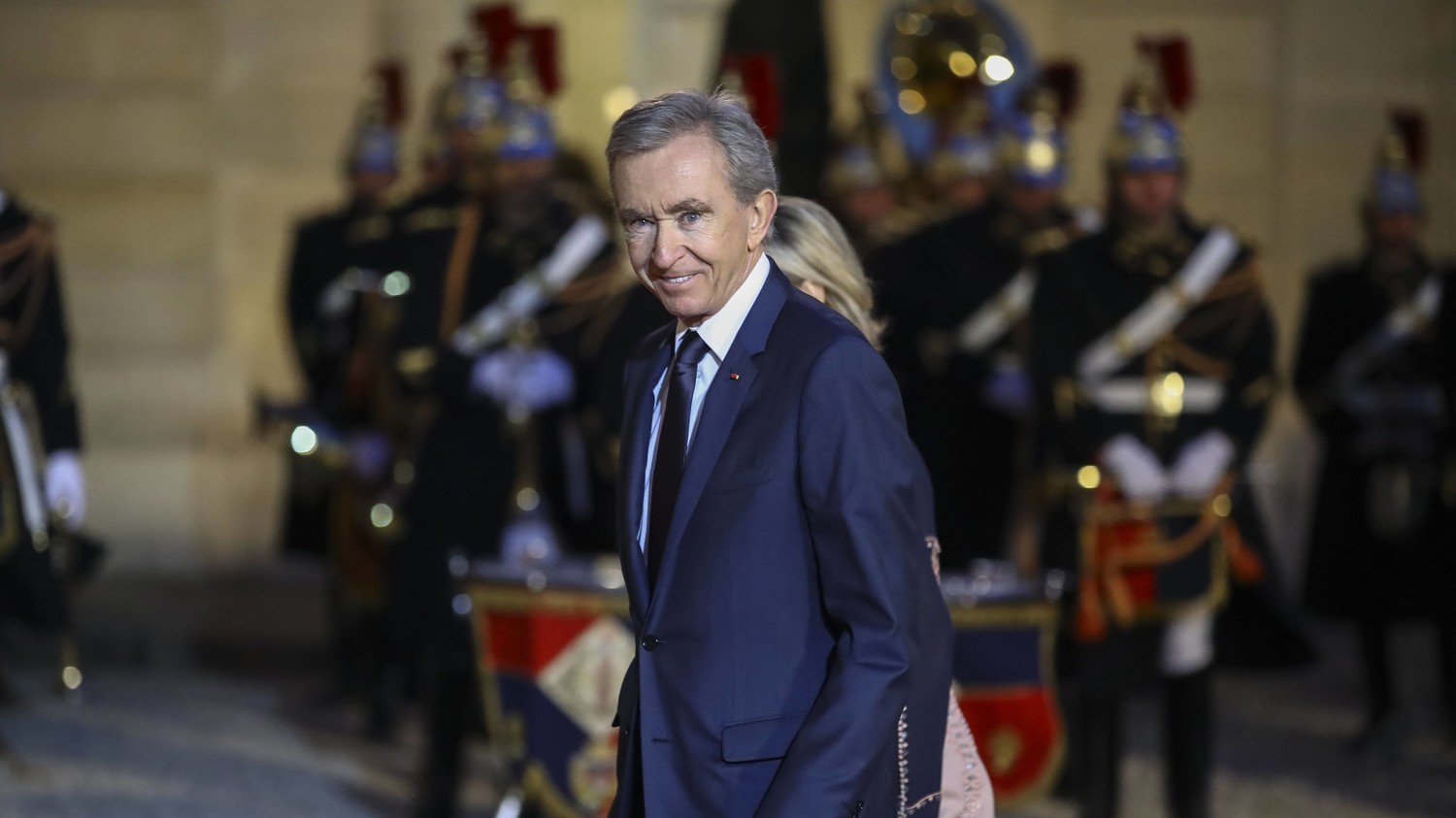
Bernard Arnault already succeeded Elon Musk as the world’s richest man last year. But since the beginning of the year, the head of the French luxury group LVMH, which owns brands such as Louis Vuitton, Moet & Chandon and Christian Dior, has once again significantly increased his lead.
The Frenchman Arnault benefits from the opening of China after the Covid pandemic. It has rekindled the appetite for luxury goods among many Chinese. LVMH managed to increase its revenue by 17 percent in the first quarter.
The boom in the luxury segment, especially in China, has caused LVMH shares to climb by almost 28 percent since the beginning of the year. LVMH thus managed to jump into the top 10 companies with the highest market capitalization worldwide. At the same time, according to Bloomberg, Arnault’s assets exceeded 200 billion euros for the first time in April, something no other European had ever achieved before.
There is much to suggest that the 74-year-old founder of LVMH will not have to give up his top position in the rich ranking any time soon. While Elon Musk is struggling with problems at Tesla and is under massive pressure from Chinese EV brands, things could hardly be better for Arnault in the second-largest economy.
French President Emmanuel Macron launched a charm offensive during his visit to China in March and got along famously with President Xi Jinping. This should provide an additional tailwind.
The fact that Arnault is in Beijing’s favor was demonstrated a few weeks ago by an unusual appointment in Paris. There, Arnault welcomed the Chinese Minister of Commerce, Wang Wentao, to the Dior flagship store and spoke with him in person.
Luxury brands have long benefited mainly because Chinese tourists spend an above-average amount of money on luxury goods when traveling abroad. However, it has long since paid off that LVMG has built up an extensive network of branches in China’s major cities. The Chinese are now spending significantly more on luxury goods there than abroad. Louis Vuitton alone has more than 60 stores in China. Joern Petring
Morgan Chen, previously Vice Chairman of Taiwan’s public sector pension fund PSPF, will become chairman of the organization. He succeeds Chou Chih-hung, who also serves as Taiwan’s minister for civil service, following a reshuffle of the pension fund.
Yu Fei is leaving his post as General Manager of Lantu Automobile Sales. According to rumors, Shao Mingfeng, the assistant to the company president, will take the position. In April, Liu Zhanshu already stepped down as head of marketing. Lantu is the premium EV brand of Dongfeng.
Is something changing in your organization? Let us know at heads@table.media!
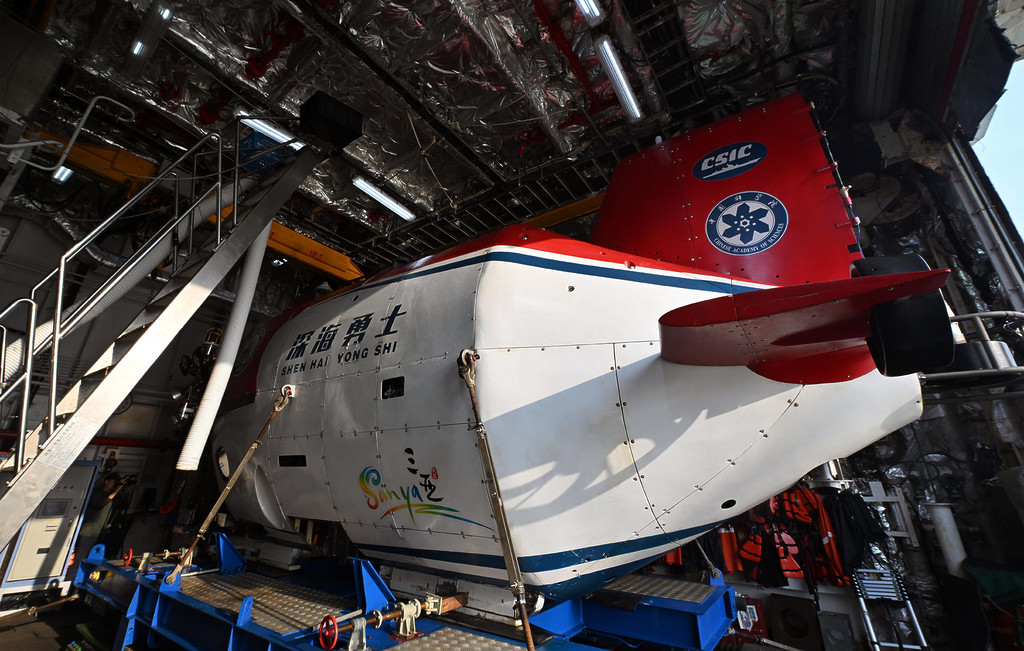
What looks a bit like a welded-together DIY contraption is the Shenhai Yongshi (Deep Sea Warrior). It is on board the research vessel Tansuo-1 in the port of Sanya. The underwater vehicle is far more than meets the eye: It currently assists an archaeological operation. Because two Ming Dynasty shipwrecks have been located at a depth of 1,500 meters in the northwest of the South China Sea. And what does a Ming freighter carry? Vases, of course. The images from wreck number 1 suggest there are over 100,000 porcelain artifacts.
The two summits are overcome, and the leaders have returned exhausted from Hiroshima and Xi’an to their countries. We were treated to first-class political drama in both cities. The performance in Xi’an was more colorful and opulent – which is also in line with the widespread notions of the appearance of power in Central Asia. In Hiroshima, the stage design was simpler. But the messages were more dramatic.
The G7 tightened the sanctions noose around Russia, and President Zelenskiy personally attended as a surprise guest. But of particular concern to the Japanese hosts was China. As expected, the Seven bid farewell with the intention of taking a more united approach to economic coercion in the future. This was accompanied by a commitment of joint de-risking. China, on the other hand, saw the main source of economic coercion and trade risk in the US.
At the Central Asia Summit, the highlight was not a final declaration, but Xi Jinping’s slowly read speech. China may always stress to meet its partners at eye level, but Xi’s position was definitely that of the local heavyweight among dependent junior partners. Read more in our analysis.


If the metaphor of a summit is taken literally, one could make out two peaks that were mentally far apart at the weekend. While Xi Jinping celebrated a new, sinocentric order of Asia at the Central Asia Summit, Japan pushed through a clearly China-critical agenda against German reservations at the G7 summit.
Xi had invited the heads of state of the Central Asian states of Kazakhstan, Kyrgyzstan, Tajikistan, Turkmenistan and Uzbekistan to the ancient imperial state of Xi’an and welcomed them with much pomp. Russia was not invited.
Xi announced:
While China repeatedly accuses the USA of hegemonic behavior, it is far from exempt from such impulses itself. The presidents paid their respects to Xi at several moments in stilted ceremonies. Xi was able to reap the fruits of his Silk Road strategy here. Before his Belt and Road Initiative, the countries of Central Asia had been almost forgotten and found themselves far from the predefined trade axes. They gratefully accept China’s offer of trade and investment.
In his speech to the other presidents, Xi outlined how he sees the region moving forward. Despite verbal embellishment with an emphasis on “friendship,” the slowly delivered text partly sounded like a lecture to a group of junior colleagues. He listed several Chinese-funded transport projects as evidence of the success of the Silk Road – all of them linking “China” to another part of the world, like the “China-Uzbekistan-Kyrgyzstan railway.”
Xi expressed his expectation that the other countries participate more actively in his own Global Security Initiative. Over and over, Xi named his country as a crucial player. “China will take this as an opportunity to step up coordination with all parties for good planning, development and progress of China-Central Asia cooperation.” The world needs a “harmonious Central Asia.”

At the same time, the Chinese leader spoke quite openly amongst his political peers where systemic issues were involved. We should “stand firm against external attempts to interfere in domestic affairs of regional countries or instigate color revolutions,” Xi said. It was color revolutions that brought free elections to Georgia, Lebanon, Kyrgyzstan, and, not least, Ukraine. The present Kyrgyz President Sadyr Dzhaparov was one of the insurgents back then and was now putting on a brave face.
The autocratically tinged message went down better with Kazakh President Kassym-Shomart Tokayev. He received preferential treatment because a week ago, he fully expressed support for the Chinese line on Taiwan in an interview with Chinese state television. “Taiwan is part of China,” Tokayev said. He would support all efforts for “reunification.”
It is an open secret that Xi did not accidentally hold his Central Asia meeting in parallel with the G7 summit of the established developed nations. As expected, the heads of government of the West talked extensively about China. In the final document, the word “China” appears 20 times. For instance, they agreed to jointly stand up against economic coercion.

Regarding China, the G7 decided (mainly in paragraph 51 of their declaration under the title “Regional Affairs”):

Despite the strong words in their individual statements, the participants emphasized that they did not wish to take an aggressive stance toward China. There is no “hostile” attitude vis-à-vis China, only a “direct and candid” one, said Joe Biden’s security advisor Jake Sullivan.
In an interview with the German public broadcaster ZDF, Chancellor Olaf Scholz emphasized that the G7 remain committed to economic development in China. While the G7 want to reduce risks in their business with China, many people in China still live in precarious conditions, Scholz said in Hiroshima on Sunday. “Therefore, nobody has an interest in preventing growth.” Scholz is also said to have particularly pushed for better offers to the Global South.

China itself reacted predictably angered. The spokesperson for the Foreign Ministry urged Japan to recommit to the post-war order and stop dumping radioactive water into the ocean before criticizing China. Before the US speaks of “economic coercion,” it should reflect on what it has been doing itself all these decades. He said the greatest economic coercion comes from the US, with the G7 being its accomplices.
As far as “de-risking” is concerned, the greatest risk would currently be posed by the USA, which he accused of tearing up trade networks in the name of national security. He further said the G7 was an exclusive, small bloc and an instrument of “America First,” and China would never bow to rules dictated by such a small group.
The Chinese Foreign Ministry also praised the inclusiveness and modernity of the Central Asia Summit in Xi’an. Nevertheless, the two summits could hardly be compared in terms of the balance of power of its dialogue partners. The Central Asian countries encompass a vast area and are often underestimated in the West. But while the GDP of each of the G7 countries and China is in the trillions, the GDP of the five Central Asian countries is measured in billions (some of them only in the double-digit range).

It is “not intended to be a G7 initiative; rather, it is to be a global undertaking”, emphasized Chancellor Olaf Scholz in the founding declaration of the “open and cooperative international” G7 Climate Club. That was at the end of last year. Over the weekend, the G7 heads of government met in Hiroshima and the climate club was again a prominent part of the final declaration.
But the project suffers from a lack of interest from the world’s largest greenhouse gas emitter. During his first trip to China last November, Scholz explicitly invited China to join.
The disinterest has two main reasons:
Another issue is that countries like China, but also India or Brazil, no longer want to be invited into clubs whose rules were previously solely determined by the West, especially a country like China, which is a leader in some areas of climate technology.
Given this development, a key statement in the German Climate Club declaration feels outdated: “Committed developing and emerging countries that join the Club are to receive support to push ahead with the transformation of their industries with a view to attaining climate neutrality.”
One sentence by Economy Minister Robert Habeck seems particularly lecturing: The transformation of the industry to climate-friendly processes and technologies is “indispensable” and “an issue that does not only concern G7 members”. You don’t say; it was said behind the scenes in Beijing. Publicly, there is polite silence.
Since its inception, Scholz’s Climate Club has therefore remained of no concern in the Chinese media, not even important enough to reject or be repelled by.
Presumably, there will be no functioning global club in the future where China and other rising countries are not founding members from the outset. In this respect, the new G7 climate initiatives will probably also be for naught. The BRICS countries represent more people than the large developed countries and now also have more economic power than the G7.
The technical and organizational successes of the Chinese energy transformation fuel this self-confidence. With a share of less than 20 percent of the global economy, China installed around three-quarters of the world’s new solar and wind energy capacities in 2022. For offshore wind, the figure is as high as 80 percent.
For hydropower, the global growth share is as high as 80 percent. Hydropower still accounts for the largest global share of renewables. In the solar sector, too, production growth is breaking all global records. From the raw material polysilicon to the finished modules: Everywhere, growth is over 50 percent, which means a capacity of almost 600 gigawatts for modules. By comparison, Germany installed seven gigawatts of new capacity in 2022. All the solar systems currently installed in Germany account for around 11 percent of a single year’s production in China.
In Japan, the only Asian G7 country, solar expansion is at a similar level as in Germany. So it is wrong to say that the G7 countries are pioneers who, with their Club, are showing the others how it’s done. On the contrary: 80 percent of the global production chains in the solar sector are located in China. For key components, the figure is even over 90 percent.
The G7 initiative also stagnates because China knows it dominates the resources for the energy transition. For example, China controls around 80 percent of the production of rare earth elements. It even controls 95 percent of the magnets made from these highly sought-after industrial metals. China similarly dominates the production of cobalt and graphite. Regarding the battery raw material lithium, Chile has the largest proven reserves, with over 40 percent.
China urgently needs the deposits itself. Because three-quarters of the world’s lithium-ion batteries are produced in the People’s Republic. China is the largest producer of the four most essential battery components. They produce 53 percent of the cathodes used as the negative pole in an electrolytic cell, as much as 78 percent of the anodes, the positive pole, and 66 percent of the separators that separate the two.
Two Chinese companies, CATL and BYD alone control over 50 percent of the global EV battery market. That creates a lot of market power. Every second EV is made in China and 98 percent of all electric buses. Two-thirds of EVs sold worldwide are made in China.
Russia’s Prime Minister Mikhail Mishustin will visit China on 23 and 24 May, as the Chinese government confirmed on Friday. Mishustin will travel to Shanghai after Beijing. According to the Russian government, a meeting with President Xi Jinping is on the itinerary. fin
According to EU Commission President Ursula von der Leyen, several companies registered in China are engaged in evading sanctions against Russia. There is “clear evidence” that some companies are supplying sanctioned goods from the European Union to Russia via third countries, she told the German broadcaster ZDF during the G7 summit in Japan.
But the fact that the companies are registered in China does not necessarily mean that they are Chinese. Some of the companies exist only on paper and have owners with different nationalities, said the EU Commission President.
However, she stressed that these companies will be subject to punitive measures under the EU’s eleventh sanctions package. “We take it seriously that we want to stop the circumvention of sanctions,” von der Leyen said. So far, supplies to Russia are perfectly legal from China’s point of view – China does not participate in the sanctions. The EU can thus only target the companies themselves. fin
The Quad Group consisting of the USA, Japan, India and Australia plans to work together to secure each other’s supplies of semiconductors and key industrial raw materials. This was reported by the Japanese business newspaper Nikkei. The Quad met in Hiroshima directly after the G7 summit. From an organizational perspective, this was particularly easy to do since the USA and Japan belong to the G7, and India and Australia were invited as guests. fin
Instead of placing its shares in the Shanghai Stock Exchange’s technology segment as planned, agrochemicals specialist Syngenta wants to go public on the main market. With this announcement, the IPO, which had stalled in March, shows a sign of life: The Shanghai stock exchange operator canceled a formal hearing on the trading requirements without providing any reasons. The Chinese parent company ChemChina aims to raise 65 billion yuan (eight and a half billion euros) by selling the shares.
Formerly a Swiss company, Syngenta was acquired by ChemChina in 2015 for the hefty sum of 43 billion US dollars. The company produces genetically modified seeds, pesticides and other products for agriculture. After the acquisition, the company was delisted from Western stock exchanges. It is now returning to the market in Shanghai. fin
Users of the short video app TikTok have filed a lawsuit against a ban on the app passed by the US state of Montana. As previously expected, the video creators are primarily putting forward two arguments against the ban:
Republican Governor Greg Gianforte sees this differently. He claims to protect the people of his state from being spied on by China. He signed the law on Wednesday. Gianforte intends it to come into force at the beginning of next year.
The lawsuit now comes from five Montana residents who regularly post videos on the app. “The law takes the broadest possible approach to its objectives, restricting and banning the protected speech of all TikTok users in Montana to prevent the speculative and unsubstantiated possibility that the Chinese government might direct TikTok Inc., or its parent, to spy on some Montana users,” the complaint states. fin

Bernard Arnault already succeeded Elon Musk as the world’s richest man last year. But since the beginning of the year, the head of the French luxury group LVMH, which owns brands such as Louis Vuitton, Moet & Chandon and Christian Dior, has once again significantly increased his lead.
The Frenchman Arnault benefits from the opening of China after the Covid pandemic. It has rekindled the appetite for luxury goods among many Chinese. LVMH managed to increase its revenue by 17 percent in the first quarter.
The boom in the luxury segment, especially in China, has caused LVMH shares to climb by almost 28 percent since the beginning of the year. LVMH thus managed to jump into the top 10 companies with the highest market capitalization worldwide. At the same time, according to Bloomberg, Arnault’s assets exceeded 200 billion euros for the first time in April, something no other European had ever achieved before.
There is much to suggest that the 74-year-old founder of LVMH will not have to give up his top position in the rich ranking any time soon. While Elon Musk is struggling with problems at Tesla and is under massive pressure from Chinese EV brands, things could hardly be better for Arnault in the second-largest economy.
French President Emmanuel Macron launched a charm offensive during his visit to China in March and got along famously with President Xi Jinping. This should provide an additional tailwind.
The fact that Arnault is in Beijing’s favor was demonstrated a few weeks ago by an unusual appointment in Paris. There, Arnault welcomed the Chinese Minister of Commerce, Wang Wentao, to the Dior flagship store and spoke with him in person.
Luxury brands have long benefited mainly because Chinese tourists spend an above-average amount of money on luxury goods when traveling abroad. However, it has long since paid off that LVMG has built up an extensive network of branches in China’s major cities. The Chinese are now spending significantly more on luxury goods there than abroad. Louis Vuitton alone has more than 60 stores in China. Joern Petring
Morgan Chen, previously Vice Chairman of Taiwan’s public sector pension fund PSPF, will become chairman of the organization. He succeeds Chou Chih-hung, who also serves as Taiwan’s minister for civil service, following a reshuffle of the pension fund.
Yu Fei is leaving his post as General Manager of Lantu Automobile Sales. According to rumors, Shao Mingfeng, the assistant to the company president, will take the position. In April, Liu Zhanshu already stepped down as head of marketing. Lantu is the premium EV brand of Dongfeng.
Is something changing in your organization? Let us know at heads@table.media!

What looks a bit like a welded-together DIY contraption is the Shenhai Yongshi (Deep Sea Warrior). It is on board the research vessel Tansuo-1 in the port of Sanya. The underwater vehicle is far more than meets the eye: It currently assists an archaeological operation. Because two Ming Dynasty shipwrecks have been located at a depth of 1,500 meters in the northwest of the South China Sea. And what does a Ming freighter carry? Vases, of course. The images from wreck number 1 suggest there are over 100,000 porcelain artifacts.
